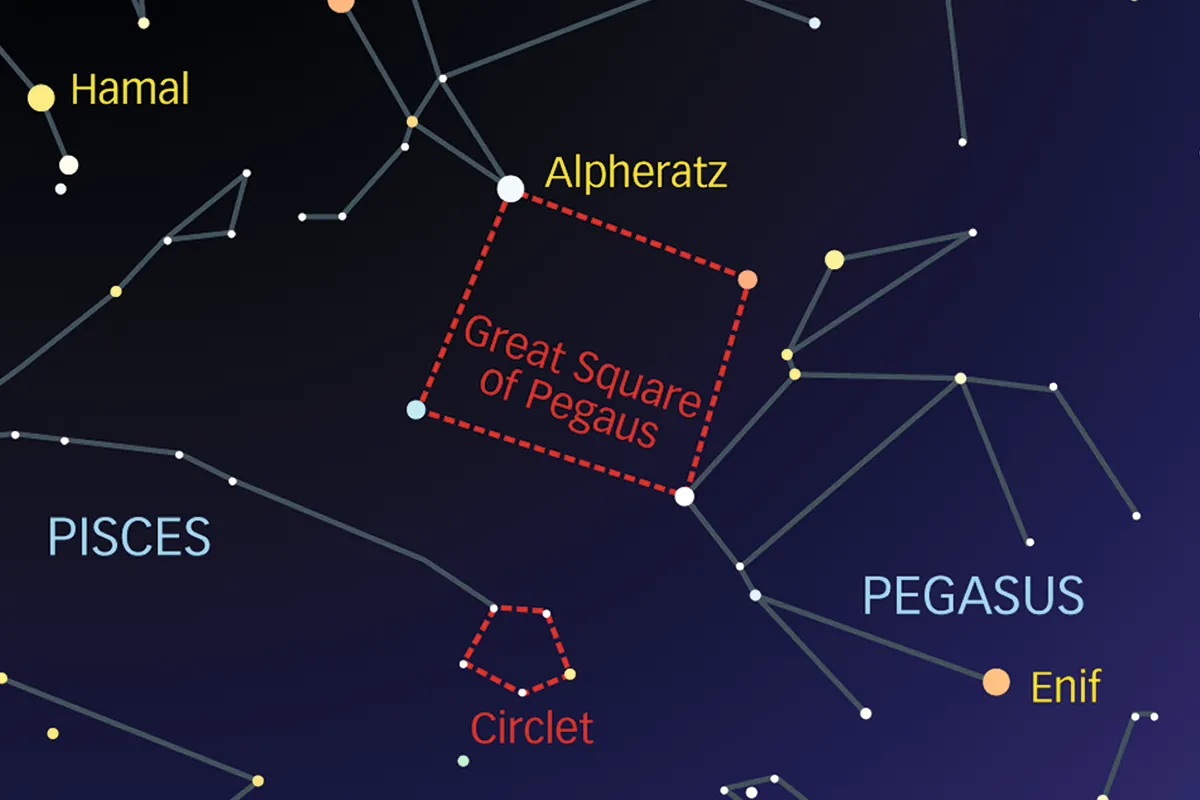19 Piscium is a giant carbon star and through the eyepiece shows the distinct orange-red hue typical of this class.
You can find it by starting with the Circlet asterism in Pisces, is a well-known, albeit faint, pattern associated with the autumn sky.

The Circlet is located near the Great Square of Pegasus and is formed of six or seven stars ranging in magnitude between +3.7 and +5.0.
The one that is only sometimes included is the star on the extreme east, 19 Piscium.
This star is 2.7º southeast of mag. +4.1 Iota (ι) Piscium and 2º north-northeast of mag. +4.5 Lambda (λ) Piscium.
At mag. +4.9, 19 Piscium is at the fainter end of naked- eye visibility, but despite this and its propensity to sometimes be dropped from the Circlet pattern altogether, it’s a pretty interesting and much studied star.

Facts about 19 Piscium
19 Piscium shows variability in its brightness, fluctuating between magnitude +4.5 and +6.2 over an irregular period.
As a variable star it is also known as TX Piscium.
The star is 760 lightyears distant. It has a spectral classification of C5III, C being part of the spectral classification system for carbon stars, 5 being a value half way along the C scale and the III meaning that it’s a giant star.

It’s also relatively cool with a temperature of 3,050K, meaning that most of its output occurs in the infrared part of the spectrum.
Despite its rather diminutive appearance from Earth, 19 Piscium’s luminosity – a measure of total radiation emitted across all wavelengths – is 4,700 times greater than that of our Sun.
The star’s angular diameter has been directly measured, and coupled with its distance this information can be used to calculate the star’s physical diameter.
It is 240 times larger than the Sun, giving it a circumference 1.2 times that of Earth’s orbit.
Have you observed or photographed 19 Piscium? Let us know by emailing contactus@skyatnightmagazine.com
This article appeared in the October 2017 issue of BBC Sky at Night Magazine.
